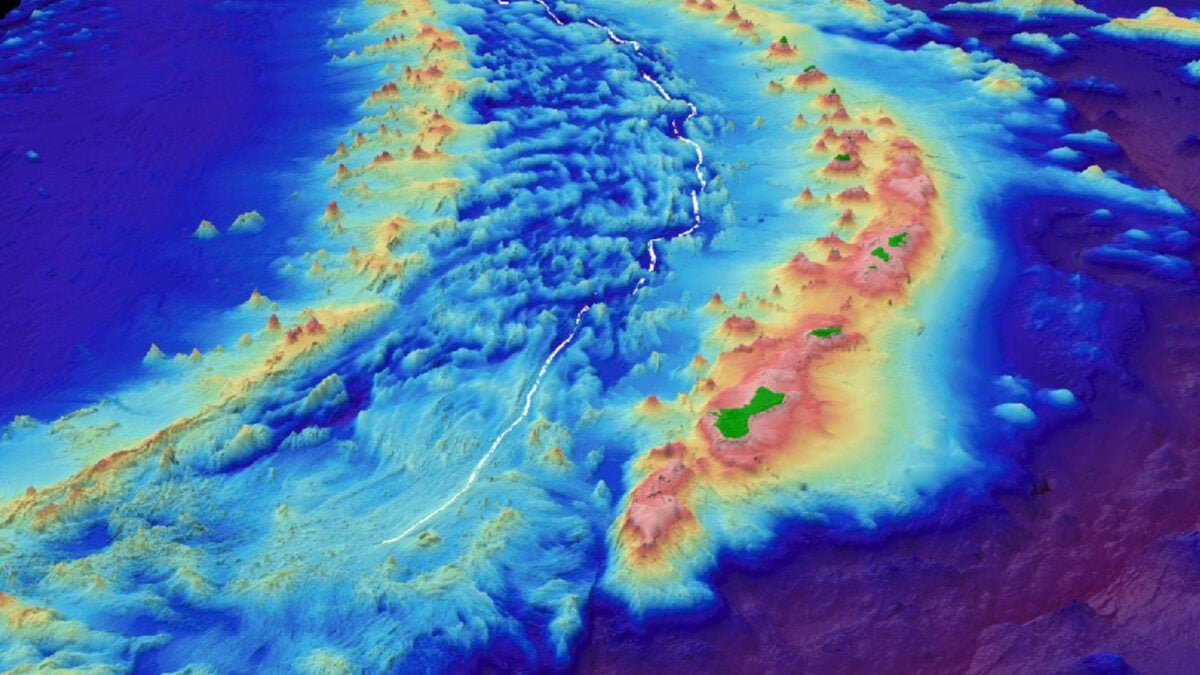
The Trump administration is expanding its deep-sea mining ambitions in the area around the Marianas Trench in the western Pacific and nearly doubling the proposed marine mining area around American Samoa from 18 million acres to 33 million acres, an area larger than Greece.
The move ignores a unified protest by indigenous leaders in American Samoa, who banned marine mining last year. Governor Pulali Nikolao Pulaa has asked the Trump administration not to proceed without the region’s consent, but the federal government plans to move forward with an environmental review. “Our fisheries are essential for food security, recreation and sustaining our Samoan culture,” Nathan Ilaoa, director of American Samoa’s Department of Marine and Wildlife Resources, told Samoa News last week. Tuna accounts for 99.5 percent of the region’s exports.
In a press release, acting Bureau of Ocean Energy Management, or BOEM, director Matt Giacona said the minerals could help U.S. manufacturing and defense. “These resources are critical to ensuring that the United States does not remain dependent on China and other countries for its critical mineral needs,” he said. In April, the Trump administration issued an executive order to accelerate offshore mining, despite international opposition and widespread concern from scientists that too little is known about the deep-sea ecosystem and the impacts mining may have on it.
The announcement marks the first time that the Trump administration has shown interest in mining the waters around the Commonwealth of the Northern Mariana Islands, a U.S. territory made up of 14 islands in the Mariana Archipelago in the western Pacific. The southernmost island of the archipelago is Guam, a separate US territory. It is the latest of at least four areas in the Pacific the Trump administration has sought to open to mining since April, including the waters around the Cook Islands and the Clarion-Clipperton Zone, a mineral-rich area south of Hawaii.
The approximately 100 square miles of water surrounding the Marianas Islands are part of the Marianas Trench National Marine Monument. “These rocks and waters are among the most biologically diverse in the western Pacific and contain the greatest diversity of seamount and hydrothermal vent life ever discovered,” reads a description of the monument on the National Oceanic and Atmospheric Administration’s website. “It holds many mysteries and many potentially valuable lessons that could benefit the rest of the world.”
Mining would occur in a 35-million-acre area west of the monument, the southernmost point of which is between the islands of Rota and Guam, according to a notice published Wednesday in the Federal Register, which opens the plan for public comment until Dec. 12. “(The request for input) is not a decision to conduct a lease sale, but rather invites and encourages input from regional and local governments, indigenous communities, industry, ocean users, and the public,” BOEM said. The Commonwealth is home to approximately 44,000 residents, including the indigenous Chamorro and Carolinian peoples.
This week’s update from the federal Bureau of Ocean Energy Management comes just days after University of Hawaii researchers concluded that deep-sea mining could harm zooplankton, tiny marine organisms that are an integral part of the ocean’s food web. Researchers found that mining operations caused huge sediment deposits covering hundreds of kilometers to cover the ocean. The zooplankton then ate particles in the sediment that were found to be 10 to 100 times less nutritious than their normal diet. “Because it’s such a tightly connected, such a tight community food web, there will be bottom-up impacts where the zooplankton will starve and then the micronekton (which eat them) will starve and the community could collapse,” said Michael Dowd, lead author of the report.
Dowd initially chose to study the water at a depth of 1,250 feet because that was where the metals company planned to leave its sediments. The company decided to do this at a lower depth, below 2,000 feet below sea level, partly because of data that found less zooplankton there, and said concerns about zooplankton at lower depths are greater. Dowd said the lack of studies at this depth is not reassuring. “We don’t really know what that deep community is like,” he said.
In the Commonwealth of the Northern Mariana Islands, where a decline in tourism this year has led to a prolonged economic recession that has led to the closure of hotels and businesses, news of potential deep-sea mining has been met with both concern and interest. “Success will depend on careful environmental management, respect for local and indigenous interests, and transparent, science-based decision-making to ensure that development aligns with both national and regional priorities,” Floyd Masaga, head of the local Environmental and Coastal Quality Bureau, told Marianas Press.
This article originally appeared in Grist at https://grist.org/global-indigenous-affairs-desk/trump-sets-sights-on-pacific-seafloor-near-the-marianas-trench/. Grist is a nonprofit, independent media organization dedicated to telling stories of climate solutions and an equitable future. Learn more at Grist.org.
